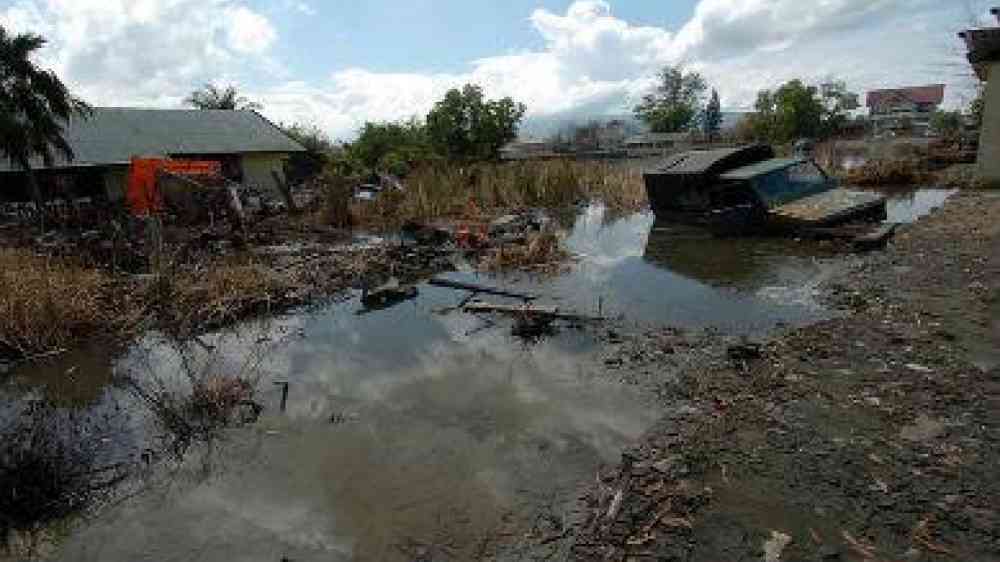10 years on, tsunami warning stumbles at the 'last mile'

By Aubrey Belford
Bangkok - In April 2012, Indonesia's Banda Aceh, the city worst hit by the tsunami that killed at least 226,000 people on Boxing Day ten years ago, received a terrifying reminder of how unprepared it was for the next disaster.
As an 8.6-magnitude quake struck at sea, thousands of residents shunned purpose-built shelters and fled by car and motorcycle, clogging streets with traffic. A network of powerful warning sirens stayed silent.
No wave came. But if it had, the damage would have been "worse than 2004, if it was the same magnitude of tsunami", said Harkunti Rahayu, from Indonesia's Bandung Institute of Technology.
As the 10th anniversary of the disaster approaches, experts and officials say weaknesses remain across the region in a system designed to warn people and get them to safety.
For millions in coastal areas, warnings don't always get through, thanks to bureaucratic confusion and geography. In the most vulnerable areas, infrastructure is wanting, and many lack the basic knowledge to keep themselves safe from the deadly waves.
Since the disaster, a sophisticated early warning system has sprouted from next to nothing, costing over $400 million across 28 countries.
With 101 sea-level gauges, 148 seismometers and nine buoys, the Indian Ocean Tsunami Warning System can send alerts to countries' tsunami warning centres within 10 minutes of a quake, Tony Elliott, the head of the UNESCO secretariat that oversees the system, told Reuters.
But there has also been mismanagement and waste.
In Indonesia, a German-funded detection initiative built an expensive network of buoys - and then scrapped them - after reports of cost overruns and signs they were ineffective.
All but one of nine Indonesian-operated buoys had been lost or damaged by fishermen, said Velly Asvaliantina, an official at Indonesia's Agency for the Assessment and Application of Technology.
The remaining buoy is not operational, she said.
Elliott said technological advances mean the lack of buoys is not a significant impediment in tsunami detection.
"THE LAST MILE"
A far bigger concern is getting warnings to at-risk coastal communities, and making sure people get to safety in time.
In some of the countries worst affected in 2004 - Thailand, Indonesia and India - much progress has been made, officials said. But concerns remain about this final, crucial stage.
The 2012 failure in Aceh prompted a reassessment in Thailand, where 5,395 people died in 2004, said Somsak Khaosuwan, head of Thailand's National Disaster Warning Center.
"We put our systems to the test each day. Our warning system is one of the best in the world, but I must admit we lack maintenance," he said.
Samit Thammasarot, a former head of the agency who was ousted from his position following a 2006 coup against then Prime Minister Thaksin Shinawatra, was more damning.
"If a tsunami happened today, would we be prepared? No, we would not," Samit told Reuters.
"On an official level there has been, in the past, corruption and cut-price equipment bought that does not meet international standards."
In India, the new system struggles to communicate alerts by fax, text message and email to remote locations, said Ajay Kumar, an official at the Indian National Centre for Ocean Information Services.
"Some of the people, officials, are not getting the alert," he said.
"Secondly, one thing that has come out from the drills is that the last mile connectivity is still missing. If (a) tsunami is coming, even now people don't know what is to be done, where to move."
"SAVED BY CHANCE"
In Indonesia, where at least 168,000 people died in Aceh province in 2004, the warning and evacuation system is beset by bureaucratic infighting.
"Of course I'm worried. I'm hoping there is no tsunami again," said Mochammad Riyadi the head of the Earthquake and Tsunami Centre at Indonesia's Meteorology and Geophysics Agency (BMKG).
Aceh provincial authorities have resisted calls to conduct monthly sound checks of the six sirens in operation, despite their failure in 2012, Riyadi said.
The BMKG has also tried for the past seven years to hand control of the warning system to the local government, but has been rebuffed, he said.
Local authorities dispute this account. The head of Aceh's disaster agency, Said Rasul, said the BMKG should be doing the tests.
"If the BMKG wants to hand over management of the tsunami sirens, then they have to give us the human resources," he said.
Building standards in Indonesia, including Aceh, are also still dangerously below par, said Jonatan Lassa, a research fellow at Singapore's S. Rajaratnam School of International Studies.
The 2012 alarm showed people did not trust the warning system, he added.
"People were saved by chance, by the tsunami not happening, and not by the warning system," he said.
Some communities have also been rebuilt in particularly vulnerable coastal areas.
"Should there be a tsunami, I think the impact will be the same (as 2004)," Lassa said. (Additional reporting by Reza Munawir in Banda Aceh, Amy Sawitta Lefevre in Bangkok and Sanjeev Miglani in New Delhi; Editing by Will Waterman)